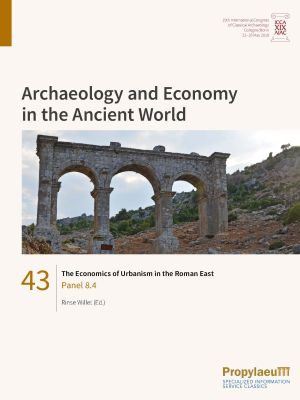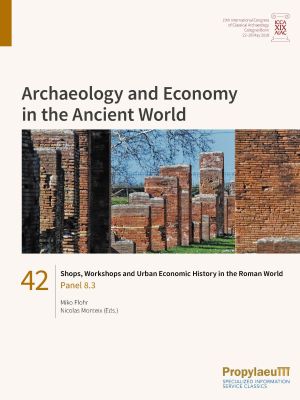Willet, Rinse
The Economics of Urbanism in the Roman East: Panel 8.4
This volume discusses the geography of cities of the Eastern Mediterranean that existed under the Roman Empire. Roman urbanism has a long historiography, however, many previous studies saw the ancient town as an isolated historical phenomenon, or at best as an index of the spread of Hellenism or Romanitas. This volume attempts to take a step further and place the town in its socio-economic context, while also presenting the most up-to-date statistics for the urban phenomenon in the Roman East. Six contributions all deal with issues related to the spatial patterns observed in the distribution of cities in the eastern half of the Empire. One contribution, by way of comparison, deals with Roman urbanism of the Iberian Peninsula. Starting off with an overview of the Eastern Mediterranean as a whole, each contribution zooms in on a specific region in order to investigate the factors that shaped the pattern of urban settlement and the variation of city size on both (supra)regional and local scales. These factors are wide-ranging, from climatological variation, possibilities of connectivity through the road-network and sea-lanes, historical path-dependency, and agricultural potential to specific policies of Roman imperialism.
Shops, Workshops and Urban Economic History in the Roman World: Panel 8.3
The material remains of Roman urban shops and workshops long played a marginal role in classical archaeology, but in recent years, they have enjoyed a marked increase of scholarly attention. Influenced by debates about the nature of ancient urban economies, scholars began to study the archaeological evidence for urban retail and manufacturing with an unprecedented vigour from the late 1990s onwards.
Since the turn of the millennium, scholars have increasingly begun to study shop- and workshop design in relation to profit-oriented investment strategies, and to explore the economic history of urban commercial landscapes. This volume discusses the ways in which the study of urban shops and workshops has challenged our conceptualization of urban economic history in the Roman world, and it explores possible avenues to further deepen our understanding of the changing nature of Roman urban commerce, and to bridge spatial and chronological distances between local sets of evidence.








